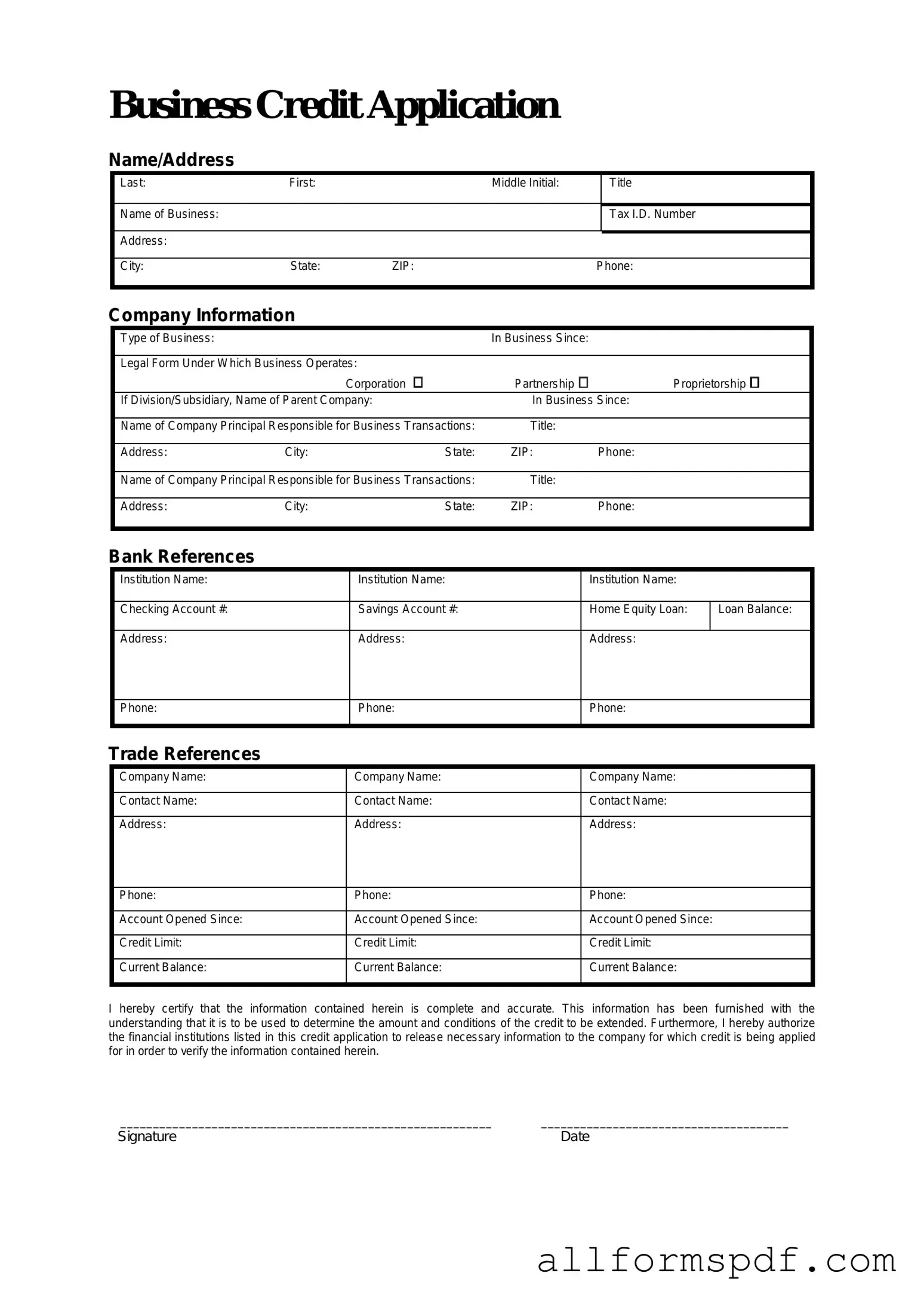Fill Out Your Business Credit Application Form
A Business Credit Application form is a document that businesses fill out to request credit from suppliers or lenders. This form typically includes information about the business's financial status, credit history, and ownership details. Completing this application accurately is crucial for securing favorable credit terms and maintaining healthy business relationships.
Create My Business Credit Application Now
